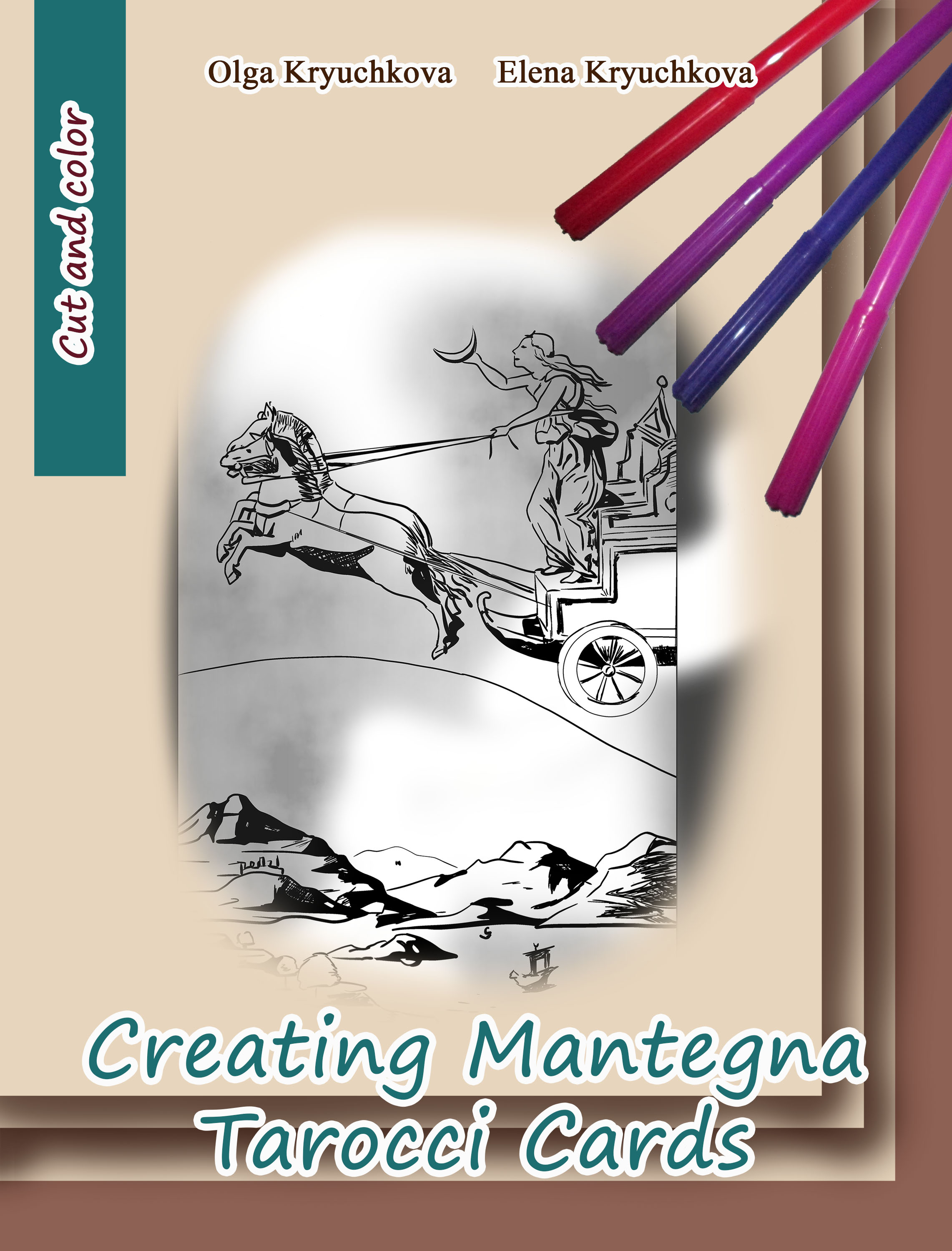
Each card has a description. The book has a section in which there is a black and white image of cards for coloring. The reader can colorize the cards, give them energy, escape from everyday problems, and engage in creativity. Then, painted cards can be cut out and pasted onto cardboard - and thus get your own unique deck of cards, which you can use as an assistant in everyday life.
The book is intended for a wide audience with a primary interest in divination cards and tarot cards.
This book will focus on Mantegna Tarocci cards and do-it-yourself cards.
First you need to tell on the cards of Mantegna Tarocci. There are two different decks of cards that were created by two different Italian artists of the 15th century. Alas, history has not preserved the names of these artists.
Previously, until the 19th century, there was an assumption that the author of the cards was the painter and engraver Andrea Mantegna, who lived in 1432-1506. But now this version is not supported.
There is also a theory that the author of Mantegna Tarocci was the Florentine engraver Baccio Baldini. Therefore, sometimes these cards are called “Carte di Baldini”. Although, probably, Baldini also has nothing to do with them. Also, the creation of Mantegna Tarocci was attributed to the artist Bartolomeo Vivarini, Carlo Crivelli from Venice and Sandro Botticelli.
It is believed that Tarot cards appeared in Italy between 1420 and 1440. In 1450, the Visconti-Sforza tarot deck was created, which became the prototype of the modern Tarot decks. Mantegna Tarocci is also an early deck of cards. There is even a version that Mantegna Tarocci may be an earlier deck than the Visconti-Sforza tarot. But there is a possibility that the creators of Mantegna Tarocci and Visconti-Sforza tarot took ideas from the mystical symbolism of the Renaissance, which contained many pagan and other ideas.
Mantegna Tarocci differs from traditional tarot cards in that they have no suits. They represent the humanistic model of the cosmos of the Renaissance, and also reflect the spheres of human activity, the ideology and social structure of that period, and ideas about ancient mythology.
Typically, tarot cards consist of 78 cards. But Mantegna Tarocci consists of 50 cards. They are divided into 5 groups of 10 cards in each group.
| Language | Status |
|---|---|
|
Afrikaans
|
Unavailable for translation.
|
|
Arabic
|
Unavailable for translation.
|
|
Bulgarian
|
Unavailable for translation.
|
|
Chinese
|
Unavailable for translation.
|
|
Czech
|
Unavailable for translation.
|
|
Danish
|
Unavailable for translation.
|
|
Dutch
|
Unavailable for translation.
|
|
Estonian
|
Unavailable for translation.
|
|
Finnish
|
Unavailable for translation.
|
|
French
|
Unavailable for translation.
|
|
German
|
Unavailable for translation.
|
|
Greek
|
Unavailable for translation.
|
|
Hindi
|
Unavailable for translation.
|
|
Icelandic
|
Unavailable for translation.
|
|
Indonesian
|
Unavailable for translation.
|
|
Irish
|
Unavailable for translation.
|
|
Italian
|
Unavailable for translation.
|
|
Japanese
|
Unavailable for translation.
|
|
Malay
|
Unavailable for translation.
|
|
Norwegian
|
Unavailable for translation.
|
|
Polish
|
Unavailable for translation.
|
|
Portuguese
|
Already translated.
Translated by Lia Gabriele Regius
|
|
Romanian
|
Unavailable for translation.
|
|
Russian
|
Unavailable for translation.
|
|
Sinhala
|
Unavailable for translation.
|
|
Slovenian
|
Unavailable for translation.
|
|
Spanish
|
Already translated.
Translated by Barbara Ayala
|
|
Swedish
|
Unavailable for translation.
|
|
Thai
|
Unavailable for translation.
|
|
Turkish
|
Unavailable for translation.
|